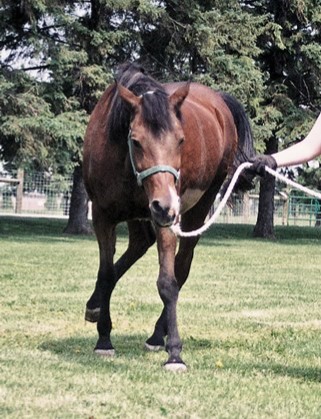Rabies in Livestock
go.ncsu.edu/readext?753885
en Español / em Português
El inglés es el idioma de control de esta página. En la medida en que haya algún conflicto entre la traducción al inglés y la traducción, el inglés prevalece.
Al hacer clic en el enlace de traducción se activa un servicio de traducción gratuito para convertir la página al español. Al igual que con cualquier traducción por Internet, la conversión no es sensible al contexto y puede que no traduzca el texto en su significado original. NC State Extension no garantiza la exactitud del texto traducido. Por favor, tenga en cuenta que algunas aplicaciones y/o servicios pueden no funcionar como se espera cuando se traducen.
Português
Inglês é o idioma de controle desta página. Na medida que haja algum conflito entre o texto original em Inglês e a tradução, o Inglês prevalece.
Ao clicar no link de tradução, um serviço gratuito de tradução será ativado para converter a página para o Português. Como em qualquer tradução pela internet, a conversão não é sensivel ao contexto e pode não ocorrer a tradução para o significado orginal. O serviço de Extensão da Carolina do Norte (NC State Extension) não garante a exatidão do texto traduzido. Por favor, observe que algumas funções ou serviços podem não funcionar como esperado após a tradução.
English
English is the controlling language of this page. To the extent there is any conflict between the English text and the translation, English controls.
Clicking on the translation link activates a free translation service to convert the page to Spanish. As with any Internet translation, the conversion is not context-sensitive and may not translate the text to its original meaning. NC State Extension does not guarantee the accuracy of the translated text. Please note that some applications and/or services may not function as expected when translated.
Collapse ▲While you might not think about rabies occurring in livestock, it happens each year. If you think about it, most livestock species are very curious about new things in their pasture and that could be a rabid animal such as a skunk, raccoon, or fox. It is important to understand what to look for and what to do if you suspect rabies.
First of all, livestock are not required to be vaccinated against rabies, however, it is recommended. Especially if livestock are used in petting zoos, riding/lesson programs, and/or if they are highly valuable. Animals that are required by North Carolina law to be vaccinated against rabies include dogs, cats, and ferrets. Rabies vaccines can only be administered by a licensed veterinarian, certified vaccinator, and registered veterinary technician that is supervised by a licensed veterinarian.
Symptoms in cattle will vary greatly. Symptoms to look for include: strain to defecate/urinate but fail, yawning, bellowing, hind leg incoordination/weakness, and drooling- dehydrated and can’t drink. Furthermore, cattle with rabies can be described in the following forms: dumb form (depression, off feed, head pressing, inability so swallow), violent form (distinct bellowing, charging, head pressing, wild-eyed), and paralytic form (inability to stand/move, usually seen right before death).
Rabies symptoms in equine: lameness, poor coordination, dazed, difficulty swallowing, focus on bite wound, aggression, and paralysis. Rabies symptoms in sheep and goats: behavioral changes (nervous, aggressive, etc.), off feed, frequent bleating (and change in sound), difficulty swallowing, muzzle tremors, straining to defecate, and paralysis.
The incubation period varies from 3 weeks to 6 months or more. Majority of animals die within 4-7 days. If you suspect your animal has been bitten by a rabid animal and it has been vaccinated there are three options: (1) re-vaccinate within 5 days with a 45-day quarantine, (2) 6-month quarantine, or (3) euthanize. If your animal has been bitten by a rabid animal and it has not been vaccinated there are two options: (1) 6-month quarantine (conditions determined by N.C. Department of Agriculture and Consumer Services) or (2) euthanize.
Protocol for Submission
First, contact local animal control or health department. The local animal control/health department will then contact the NC Department of Health and Human Services and they will contact NCDA&CS Veterinary Division. You will then complete the proper forms and submit the head to NCDA&CS Veterinary Division.
Take-Home Message
If something strange is going on with your livestock and/or equine don’t forget rabies is in our area and should be something to consider when looking at symptoms. Always consult with your veterinarian for guidance when trying to diagnose your animal.
For more information about rabies please visit: Rabies





